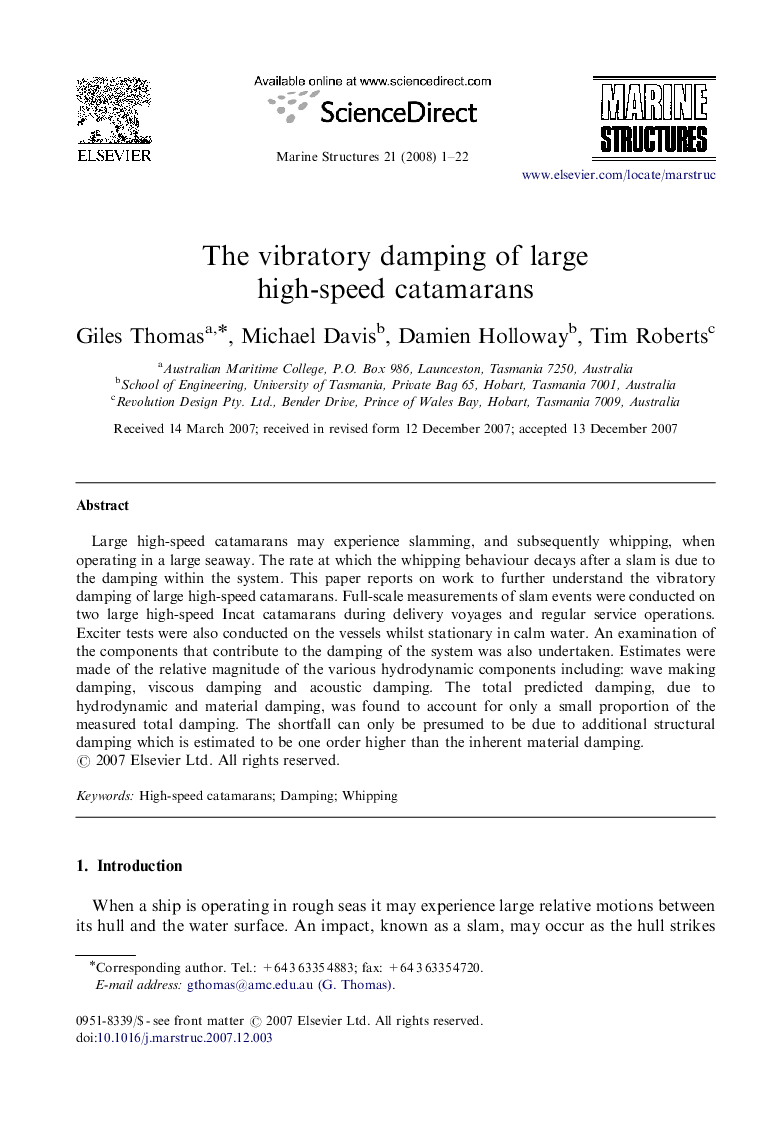| Article ID | Journal | Published Year | Pages | File Type |
|---|---|---|---|---|
| 293968 | Marine Structures | 2008 | 22 Pages |
Large high-speed catamarans may experience slamming, and subsequently whipping, when operating in a large seaway. The rate at which the whipping behaviour decays after a slam is due to the damping within the system. This paper reports on work to further understand the vibratory damping of large high-speed catamarans. Full-scale measurements of slam events were conducted on two large high-speed Incat catamarans during delivery voyages and regular service operations. Exciter tests were also conducted on the vessels whilst stationary in calm water. An examination of the components that contribute to the damping of the system was also undertaken. Estimates were made of the relative magnitude of the various hydrodynamic components including: wave making damping, viscous damping and acoustic damping. The total predicted damping, due to hydrodynamic and material damping, was found to account for only a small proportion of the measured total damping. The shortfall can only be presumed to be due to additional structural damping which is estimated to be one order higher than the inherent material damping.
